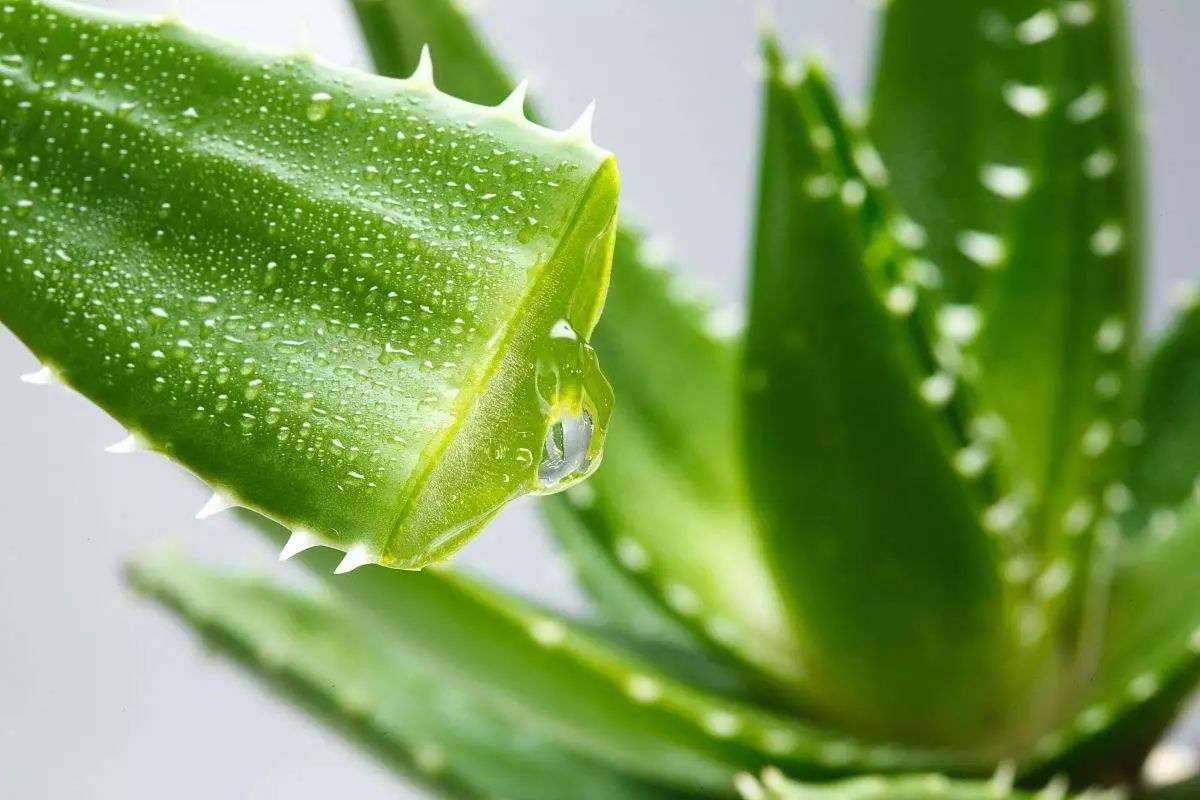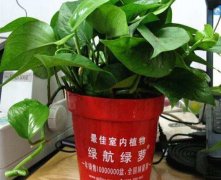Aloe Vera How to raise_Aloe Vera cultivation methods and precautions
Detailed maintenance methods of aloe vera:
Aloe leaves plump, pure green or with stripes, long lanceolate, apex pointed, leaf margin spiny or entire, clustered on the stem, spiral arrangement. Racemes shoot out from leaf clusters, erect upward growth, pedicels higher than leaves, orange-red flowers, very beautiful. Potted flowers outnumber autumn and winter flowers. Capsule triangular, dehiscing at maturity to expose seeds.
Aloe is native to South Africa and other places, and there are wild distribution in Yuanjiang area of southern Yunnan Province of China. Sexual preference warm, humid, sunny environment, appropriate loose, fertile, well-drained soil, saline-alkali resistance. Not cold, winter room temperature should not be lower than 5℃, growth temperature is 20~30℃. Drought-resistant, growth period should be slightly wet, dormant period should be dry. Not tolerant of shade, in the shade of the environment more than not flowering, sunny leaves and flowers, then let us understand how to raise aloe vera.

1. Selection of flowerpots for aloe cultivation
(1) flowerpot quality requirements: clay flowerpots, plastic pots, porcelain pots and pottery pots can be used.
(2) Flower pot size: Aloe vera can be planted in pots with a diameter of 14 to 20 cm.
2. Preparation of Pot Soil for Aloe Culture
Aloe likes fertile, well-drained sandy soil and is more resistant to salinity. Families can use the following formula: garden soil: moldy soil: sand =4:4:2; peat soil: moldy soil: sand: pearlite =4:3:2:1.
(1) flowerpot quality requirements: clay flowerpots, plastic pots, porcelain pots and pottery pots can be used.
(2) Flower pot size: Aloe vera can be planted in pots with a diameter of 14 to 20 cm.
3. The watering method of aloe cultivation
Because aloe stems and leaves are rich in water, the water requirements are not high. Aloe likes dry soil, drought resistance, bogey water, like dry air environment. Spring temperature rises, aloe resume growth, can slightly increase water supply, basin soil to wet partial dry is appropriate. Keep the pot soil moist in summer, watering should be dry and wet, and at the same time because aloe likes dry air environment, it should be placed separately from other plants that like humid air.
Keep the basin soil dry in autumn. After the autumn temperature cools down, reduce the water supply until it is dry and not dry. Winter, early spring when the temperature is low (5℃ above), aloe is in a semi-dormant state watering should not be more, to pot soil dry and not dry is appropriate, dry only slightly watering.
4. Fertilization method for aloe culture
Aloe has low requirements for fertilizer, but lack of fertilizer is not conducive to its growth.
In the peak season, it can be topdressed 4-5 times of decomposed 20 times liquid fertilizer or 1000 times of "Hua Duo Duo" general fertilizer once.
If sufficient base fertilizer is applied during planting, no fertilizer can be applied during the growing season. Organic fertilizer such as composted bean cake fertilizer can be used as base fertilizer. The amount of base fertilizer applied is 1/10 of the pot soil.
Every spring warm growth season chase 3~4 times liquid fertilizer, summer and autumn do not topdressing, otherwise the stem node is too long, leaves sparse, easy to lodge.
5. Light Requirements for Aloe Culture
Aloe Vera likes light, spring and autumn season more direct sunlight will grow strong; summer placed in a well-ventilated semi-shady place, more conducive to its growth. In the north, after autumn, it should be moved indoors for maintenance, and placed in the sunny place of the windowsill; in winter, it should be placed in a place with good indoor light and room temperature not lower than 10℃.
6. Aloe Vera farming precautions
(1) Aloe vera grows faster and should be replaced once a year when it leaves the room in spring. The pot soil can be cultivated by 3 parts of rotten leaf soil, 13 parts of garden soil, 4 parts of river sand or 3 parts of rotten leaf soil, 2 parts of garden soil, 3 parts of river sand and 2 parts of pearlite, and a small amount of fully decomposed organic fertilizers such as chicken manure, bone meal and oil residue can be applied as base fertilizer.
(2) If the culture soil is changed once a year, when the nutrients are sufficient, no topdressing or less topdressing can be applied during the growth period. Summer and autumn growth is the fastest, can be applied every 15 to 20 days 1 thin liquid fertilizer. Such as topdressing 10%~15% fully fermented cake fertilizer water or 0.1% urea fertilizer water plus 0.1% potassium dihydrogen phosphate water, etc. Winter and spring can not be fertilized.
(3) Summer is the peak season for aloe growth, so attention should be paid to the supply of water and fertilizer. When the sun is strong, the noon light should be properly blocked. Aloe vera cannot be cultivated with hygrophilous plants. It is sufficient not to dry the soil excessively when flowering.
(4) Ensure sufficient light in autumn and water properly. Aloe is not cold-resistant, after the temperature drops, it should be moved in time to have a closed balcony or room with light, pay attention to water control, so that the basin soil is dry but not dry.
(5) Aloe Vera needs sufficient sunlight to grow. It should be noted that aloe vera should not be exposed to the sun for the first time. It is best to see the sun only in the morning and gradually increase the light after 10 days. Family potted plants, spring and autumn on the balcony or outdoor windowsill to receive direct sunlight will grow strong; summer moved to a well-ventilated semi-shady place; winter indoor light sufficient place, room temperature is not less than 10℃ is appropriate.
(6) Aloe Vera requires full sunlight throughout the year. In spring, it is best to move outdoors and place it on the balcony in the south, or on the windowsill of the south window, but avoid rain. Although aloe vera does not like too much moisture, it needs sufficient moisture during its growth period, especially under strong light. To encourage the plant to spread around, you can cut off some of the overgrown leaves evenly in the center, so that the plant will not rot due to the excessive density of leaves under strong light.
7. Breeding method of aloe culture
Aloe vera can be divided into plants or cuttings propagation.
Plant division propagation can be combined with pot change in early spring. The method comprises the following steps of: knocking out plants from pots, removing old plants, selecting young seedlings from basal parts, placing the seedlings in another pot; planting the seedlings at a certain planting depth to stabilize the seedlings, watering the seedlings less, placing the seedlings in a warm and moist place, spraying water on leaf surfaces and pot soil surfaces after 4 to 5 days under the condition that the plants do not wilt, and watering thoroughly after 10 to 15 days.
Sowing can take place between April and May. Cut leaves about 8~10 cm long from the top of the old plant as cuttings, apply plant ash on the incision, air for 1~2 days, insert them into plain sand after the incision shrinks, keep the pot soil moist, and root for about 20~30 days.
- Prev

Detailed maintenance methods of green pineapple in green navigation: culture methods and attention of green pineapple
The following are the detailed conservation methods of green pineapple: green pineapple, also known as Pueraria lobata, is a perennial evergreen vine of Araceae. Native to the tropical rain forests of the Malay Peninsula of Asia and Brazil of South America. Green pineapple, as a shade-tolerant foliage plant, is very
- Next
Avocado eating method and efficacy avocado, really healthy? Or a businessman?
Introduction: avocados sell well in China not only because of their high appearance and health value, but also because multinational agribusiness trade capital is trying to brainwash consumers with beautiful stories. But for the truth that avocado production is full of blood and sweat, of course they
Related
- Fuxing push coffee new agricultural production and marketing class: lack of small-scale processing plants
- Jujube rice field leisure farm deep ploughing Yilan for five years to create a space for organic food and play
- Nongyu Farm-A trial of organic papaya for brave women with advanced technology
- Four points for attention in the prevention and control of diseases and insect pests of edible fungi
- How to add nutrient solution to Edible Fungi
- Is there any good way to control edible fungus mites?
- Open Inoculation Technology of Edible Fungi
- Is there any clever way to use fertilizer for edible fungus in winter?
- What agents are used to kill the pathogens of edible fungi in the mushroom shed?
- Rapid drying of Edible Fungi

